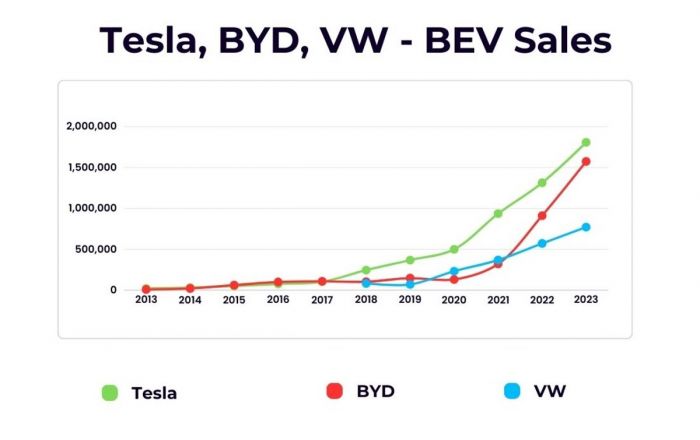The 3.0-liter V6 Land Rover engine has two versions: TDV6, which is the less powerful version, and SDV6, which has higher power output. The mechanisms in both are alike however automated differently. Some of the cars fitted with the engine are across different brand ranges, which include Discovery (3, 4, and 5), Jaguars, and Range Rovers.
The 3.0 SDV6 and TDV6 engine problems are the results of the engine being maintained incorrectly, which has led to many internal problems and damages. Many drivers and owners are unaware of the dangers that come with using and servicing a 3.0 engine in the wrong way which can lead to costly repairs.

Key facts and my opinion about the engine
- Production years: 2009-2024
- Average lifespan of SDV6 3.0: 190,000-210,000 miles
- Fuel supply type: Common Rail
- Power range: 211 hp
- Fuel efficiency: excellent
- Engine block material: cast iron
- Engine reliability score: medium
- The most common problems: high-pressure fuel pump problems, crankshaft issues, three weak belts in the engine, EGR and heat exchanger leaks.
Types of engine Problems with 3.0 SDV6 and TDV6
Crankshaft Failure
In case the engines fail, consider your car to be a shell because it is now deemed useless. The engine may have issues with failed bearings or snapped crankshaft, which demands replacement. A new or revamped engine is the only thing that can make the vehicle function in its former capacity.
For the Land Rover owners, the fault could be from the manufacturer or in the design. In some cases, the owner can deal with the severe breakdowns of the engines. In case there was a serious malfunction that came about during the manufacturing stage, it will project in the future.
As the buyer, the owner cannot warn you in any way about the defect. The production has to continue in agreement with the maintenance guidelines. One of the common problems encountered is twisting the crankshaft liner. However, there are repetitive flaws during service practice that can be expected, which could help avoid expensive maintenances of the diesel engines.
Because of this, some of the brands have come up with technical bulletins addressing most of the problems occurring during manufacturing. The technical service gives recommendations and improvements for the prevention of damages and their enhanced repair.
Oil Leaks
Although less common, oil famishment is a major cause of engine failure. You can experience the problem around the turbochargers, the engine, and the adjacent galleries. The issue with the lubrication system causes the turbocharger to overheat and fail prematurely.
Oil seepage via the crankshaft frontal oil cap is a commonly encountered fault that causes severe damage. It happens suddenly and quickly whereby the oil flows in a stream. The driver will see leakage of oil and even refill it and drive away. However, with time, the oil still drains. When the car goes for service, it may have a knocking motor. In such cases where the owner detects oil leaks, it is crucial to replace the oil pump with a new one and have a different oil seal.
Also, oil escape through the seal could be a result of freezing crankcase aeration. The engines consist of a metal tube through which the crankcase vapors pass. Whenever there are low temperatures, there can be freezing. Thus, it is necessary to be forewarned in case of oil leaks.
You will know what to do to prevent recurring problems that cause further damage. While changing the seal and pump, you could consider replacing the timing belt. Alternatively, the solution to a lasting engine capability is having clean oil after covering 6,000 miles.
Additionally, have the fuel and air filters changed to enhance better performance of the engines. The oil needed for the 3.0 is critical since it should be under the right conditions. When you use the wrong oil, it will cause a congealing issue, which can block tiny oil parts in the engine.
Also, when you take your car to the mechanics, double-check the oils they are using to avoid issues.
Exhaust Gas Recirculation (EGR) Valve
Mostly, you will find EGR valves fitted in modern vehicles because they help with the reduction of CO2 releases. The EGR removes the gases from the exhauster and releases them back to the cylinders at reduced temperatures releasing nitrogen oxide gas, which is less harmful. Although, the process produces extra soot that can ultimately cause congestion preventing the proper functioning of the valves.
When there is an issue with the EGR valve, it causes it to stick in an open position, which can lead to engine damage. This device turns used hot gases back to the inlet section to water down the fresh clean-burning air. The best option is to eliminate or replace the EGR valves.
You can know the valves are defective through heavy black smoke excreted, high fuel usage, poor running, and loss of power. Otherwise, you can also have a complete check to confirm if there is any problem with the valves.
Also, the carbon build-up may clog the EGR valve, which results in disinclination and no power when accelerating. In case you notice there is hesitance and the vehicle splutters when you pull away, it is the likely cause. You may notice the engine is inconsistent, and the revs are unstable. The solution would be using carb cleaner and a small brush to tidy up the valve by removing the carbon distillate.
Loss of Power
Several issues could lead to loss of power in your car. However, in most cases, you need to have your automobile plugged into diagnostic gear to discover the exact cause of the problem. Mainly, the reported cases result from fragmentation among the intercooler hoses and problems with the EGR valves.
It implies the lack of air enhancement pressure leading to poor performance due to fuel and air mixture that causes black smoke. In many scenarios, it puts the car in limited performance mode.
Airbag and suspension strut
If the car suspension fails to raise over high sensors, there is likely a leak or split in the airbag. It will demand you to change the entire unit since it cannot be replaced. The symptoms could be that the vehicle will fail to go in access mode or off-road and can only reach a certain standard ride height.
Others
Heat damage, melted pistons, and damage to fuel injectors. Overpowering the results of the injector in melted pistons. Also, the lack of oil supply to the oil pump leads to failure in parts that need lubrication, such as turbochargers. In case the timing chain is not properly maintained, it can snap, which results in major engine failures. Weak internals and lack of servicing could also cause engine failures.
High Mileage
Failure and wear out of the internal parts could be a result of the high power produced by engines from the factory. The general strength of the components used in the car cannot withstand a lifetime operation. Also, long periods of maximum power production and a forceful driving style could affect the vehicle's overall performance.
Reported issues
The restricted performance indication has been showing and clearing in case the vehicle is left running for a while, and there is increased fuel consumption.
Evidence of oil in the air cleaner and air duct and the oil consumption on the engine has been fair irrespective of the fact that there is oil in the tank.
Does the Mass Air Flow (MAF) sensor result in poor fuel usage? The connection to the oil in the air duct has been confusing. When the restrictive performance alarm is off, the performance and power are normal, thus the engine's excellent performance.
How to Diagnose Your Engine Problems for 3.0 SDV6 and TDV6?
A 3.0 SDV6 or TDV6 engine has a few indicator lights to help you diagnose your engine problems.
- The first indicator is the check engine light located in the instrument cluster and can be activated by pressing the button on top of the steering wheel. This light will come on if there is a problem with one of the sensors or other components in the engine control system. If this light comes on, take it to your Subaru dealer for an inspection as soon as possible.
- The second indicator is the low oil pressure warning light, which can also be activated by pressing the button on top of the steering wheel. This light will come on if there is a problem with low oil pressure in your engine, and it means that you need to stop driving immediately.
Final words
In conclusion, the 3.0 version of the SDV6 and TDV6 engine is a new model that was designed to provide more power and fit better in smaller engines. Unfortunately, many internal problems and damages have resulted when installing this engine in an incorrect position.
The 3.0 engine has been installed on the wrong side of vehicles due to its size, which has led to the intake manifold being on the wrong side. The major issues that have been identified with the V6 have been identified in response to customer complaints and warranty claims. Several engine problems have been identified for the 3.0 SDV6 and TDV6.
About the authors
The CarAraC research team is composed of seasoned auto mechanics and automotive industry professionals, including individuals with advanced degrees and certifications in their field. Our team members boast prestigious credentials, reflecting their extensive knowledge and skills. These qualifications include: IMI: Institute of the Motor Industry, ASE-Certified Master Automobile Technicians; Coventry University, Graduate of MA in Automotive Journalism; Politecnico di Torino, Italy, MS Automotive Engineering; Ss. Cyril and Methodius University in Skopje, Mechanical University in Skopje; TOC Automotive College; DHA Suffa University, Department of Mechanical Engineering






Add comment